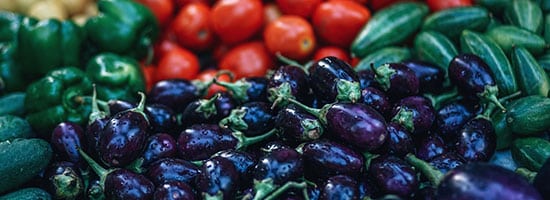
Increasing fiber in the diet is one easy, straightforward lifestyle modification that can help prevent hemorrhoids. Fiber bulks up the stool, helping to keep you regular. It also works to prevent constipation, a significant risk factor for enlarged, painful hemorrhoids. Currently, it is recommended that women consume 25 grams per day, while men need around 38 grams per day.
Fiber is found in a variety of foods. Fruits, vegetables, whole grains, beans, nuts, and many fortified foods are all excellent sources of fiber. Some foods have higher amounts than others. It can be helpful to read food labels and study dietary reference charts to determine which foods will be best to incorporate into your diet and lifestyle.
Fruits and Vegetables
Fruits and vegetables are an important part of a high-fiber diet. Fiber content will be at its highest when foods are eaten raw. Bananas, oranges, and apples (with the skin) are good choices. Fruits such as raspberries, blackberries, mango, pears, prunes, and figs have even higher amounts of fiber. Vegetables like broccoli and brussels sprouts have notable fiber in them. Collard greens, butternut squash, and artichokes are even better. Baked potatoes and sweet potatoes (with the skin) are another option.
Whole Grains
Whole grains are also a great source of fiber. Brown and wild rice, wheat and rye flour, barley, oats, popcorn, and quinoa are all well-known sources. Other whole grains include buckwheat, bulgur, and millet. Bran cereals are also a healthy source of fiber.
Beans, Nuts, and Seeds
Eating lentils, black beans, kidney beans, split peas, and chickpeas (as well as many other varieties) will also boost your fiber intake. Products made out of beans, like black bean or soy burgers, will also be beneficial. There are many different types of nuts, but most people prefer peanuts, almonds, walnuts, and pecans. Adding roasted or raw seeds like soybeans, sunflower seeds, chia seeds, and pumpkin seeds will ramp up the fiber in your diet.
Fortified Foods
Fiber is added to a myriad of foods. Pasta, breads, crackers, cereals, milk, yogurt, and even orange juice can be considered a good source of fiber. Fiber bars and fiber supplements are also available. However, it is important to be aware of the other ingredients in some fiber-fortified foods. They may also contain extra sugar, sodium, saturated fat, and unnecessary calories. Reading nutrition labels can help determine whether a food is actually a healthy source of fiber or not.
